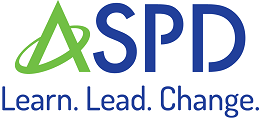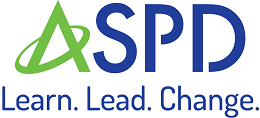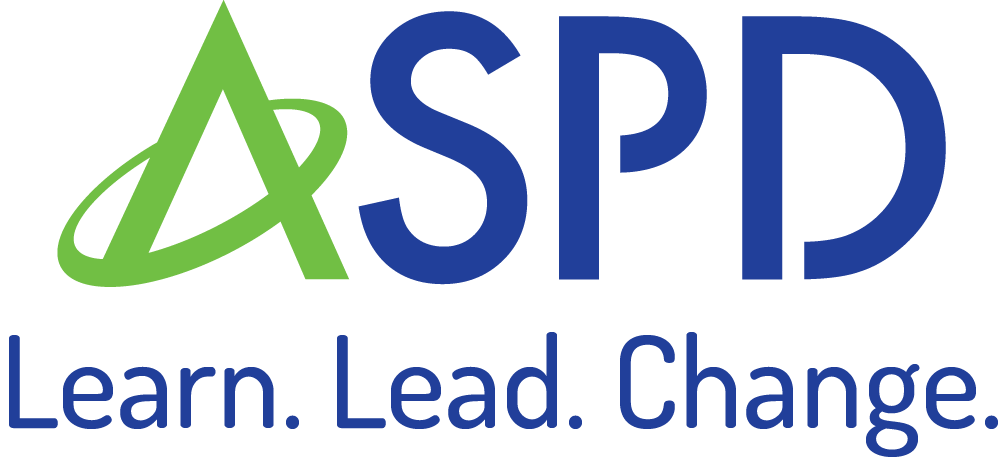Chrome Extensions for Teachers of Language Learners
These Google Chrome extensions were selected by teachers enrolled in EDEU503, Methods of Teaching ESL, September 2024. The items selected were not peer-assessed or evaluated prior to inclusion. Suggestinos for application uses based on levels of English language development (ELD) were added with assistance of ChatGPT.
| Category | Extension Name | Functionality | Pre-Production | Early Production | Speech Emergence | Intermediate and Advanced Fluency |
|---|---|---|---|---|---|---|
| Assessment and Feedback Tools | AI Flashcards | Vocabulary assessments using flashcards | Teacher creates basic vocabulary flashcards. | Students review flashcards with definitions and examples. | Students create flashcards for more complex vocabulary and use in context. | Use to create and practice advanced vocabulary flashcards for targeted assessments. |
| Assessment and Feedback Tools | Edpuzzle | Embedded video assessments | Teacher embeds comprehension checks in videos. | Students respond to simple embedded questions. | Engage with complex embedded assessments. | Analyze and critique video content through advanced assessments. |
| Assessment and Feedback Tools | InsertLearning | Interactive web-based assessments | Teachers embed questions and notes into webpages to provide scaffolded assessments. | Students answer scaffolded questions based on content from webpages. | Engage with comprehension questions related to subject content. | Analyze advanced reading comprehension content with embedded activities. |
| Assessment and Feedback Tools | Screencastify | Video assessment through recorded responses | Teachers record instructions and provide feedback through video. | Students create short videos practicing oral skills. | Record explanations for vocabulary, simple concepts, and presentations. | Advanced use in providing feedback for oral presentations and video projects. |
| Assessment and Feedback Tools | Vocab Expander | Vocabulary quizzes from text | Teacher creates scaffolded quizzes from vocabulary. | Students take basic quizzes to reinforce vocabulary. | Use quizzes to test vocabulary in context of writing and reading. | Create and engage with advanced quizzes for nuanced vocabulary. |
| Classroom Organization and Accessibility | Chrome Notes | Digital note-taking | Teacher provides pre-filled notes for scaffolded support. | Students add simple notes to organize information. | Take detailed notes while reading or listening to lessons. | Organize advanced research notes for projects. |
| Classroom Organization and Accessibility | Custom Cursor Extension | Custom visual cursors | Teacher uses engaging cursors to focus students’ attention. | Students identify and follow visual cues for activities. | Use custom cursors for engagement during collaborative tasks. | Employ as part of creative projects to enhance presentation. |
| Classroom Organization and Accessibility | QR Code Generator | Generate QR codes for access | Teacher generates QR codes for quick access to resources. | Students use QR codes to access simple materials independently. | Navigate instructional materials via QR codes. | Access advanced supplemental materials efficiently. |
| Classroom Organization and Accessibility | Screenshot Reader | Extract text from images | Teacher extracts text to scaffold comprehension for beginner readers. | Students read and interact with simple extracted texts. | Practice reading and analyzing more detailed extracted text. | Analyze complex visual-based materials using extracted text. |
| Language Support and Translation | Dictionariez | Word definitions; translation; flashcards | Teacher highlights words and provides definitions with visual support. | Students search for definitions and practice vocabulary. | Create flashcards and use definitions in sentences. | Explore advanced word meanings and synonyms. |
| Language Support and Translation | Google Translate | Translate text, web pages, and documents | Translate basic instructions and words for understanding. | Translate short phrases to aid comprehension. | Translate paragraphs and practice sentence structure. | Refine understanding of complex L2 texts and idioms. |
| Language Support and Translation | ImTranslator | Translate words, phrases, and text | Translate single words or short sentences for immediate comprehension. | Translate phrases and use visual/audio tools for understanding. | Translate longer passages to improve fluency. | Translate complex text for nuanced comprehension. |
| Language Support and Translation | Language Reactor | Dual subtitles; real-time translation | Use to watch videos with L1 and L2 subtitles to build listening comprehension. | Recognize common words and phrases in L2 subtitles. | Practice identifying vocabulary and comparing L1 and L2 sentence structure. | Analyze nuances in L1 and L2 translations to refine comprehension. |
| Language Support and Translation | Merriam-Webster English Dictionary | Definitions; language support | Use for basic word definitions and visual aids. | Search for definitions and apply in simple contexts. | Expand sentence structure using new vocabulary. | Explore nuanced definitions and advanced vocabulary usage. |
| Language Support and Translation | Mouse Tooltip Translation | Hover-over translations; multilingual support | Teacher highlights text for immediate comprehension. | Students use hover-over tools to understand simple phrases. | Translate full sentences independently to compare meaning. | Use as a support for complex readings. |
| Language Support and Translation | My English Reading Assistant | Vocabulary tracking; contextual definitions | Use to introduce new vocabulary and provide contextual definitions. | Students track known/unknown vocabulary to build comprehension. | Use contextual definitions to practice sentence writing. | Enhance vocabulary with detailed contextual analysis. |
| Language Support and Translation | Read Pronunciation: English to French | Pronunciation support; parts of speech | Introduce students to basic pronunciation of simple words. | Students practice pronouncing individual words correctly. | Use pronunciation exercises for simple sentences. | Improve advanced pronunciation and grammar understanding. |
| Language Support and Translation | Read&Write | Text-to-speech; translation; picture dictionary | Use text-to-speech and picture dictionary for foundational vocabulary. | Highlight sentences and practice pronunciation using text-to-speech. | Improve fluency by reading while listening. | Advanced writing support, including proofreading. |
| Language Support and Translation | ReadLang | Translate text; create flashcards | Provide translated texts to introduce vocabulary. | Translate and review vocabulary using flashcards. | Translate paragraphs and reinforce learning with flashcards. | Use flashcards for advanced vocabulary; translate complex texts. |
| Language Support and Translation | Rememberry | Word translations; spaced repetition | Teacher introduces basic vocabulary with spaced repetition. | Students practice vocabulary using spaced repetition tools. | Reinforce learning by reviewing and using new vocabulary in sentences. | Retain advanced vocabulary with systematic practice. |
| Language Support and Translation | Reverso Context | Contextual translation with examples | Provide basic word translations with context to students. | Translate simple phrases and explore sentence usage. | Use contextual translations to reinforce new vocabulary. | Refine understanding of advanced context-specific language. |
| Language Support and Translation | Trancy | Bilingual subtitles for videos | Use to provide video subtitles in L1 and L2 for comprehension. | Focus on recognizing vocabulary and basic sentences in subtitles. | Practice identifying key phrases and sentence structures. | Compare advanced dialogues in L1 and L2 subtitles. |
| Language Support and Translation | Vocabulary Boost | Instant word translation; vocabulary practice | Teacher introduces basic vocabulary with translations. | Students translate words and practice using vocabulary exercises. | Use vocabulary in short sentences and discussions. | Advanced practice with contextual vocabulary. |
| Language Support and Translation | Voice In | Voice typing; speech-to-text | Not applicable—requires verbal output. | Dictate single words to practice pronunciation. | Dictate simple sentences to improve fluency. | Dictate paragraphs to refine advanced speaking skills. |
| Multimodal Learning and Interactive Tools | AI Story Generator | Create visual story-based activities | Teacher creates visual prompts for basic storytelling. | Students use prompts to write short story outlines. | Develop detailed stories using visual aids. | Refine complex story structures and integrate visuals for presentations. |
| Multimodal Learning and Interactive Tools | DualSub | Dual subtitles for online videos | Use L1 and L2 subtitles to scaffold video comprehension. | Recognize basic vocabulary in subtitles. | Compare sentence structures and vocabulary in subtitles. | Analyze complex L2 dialogue while referring to L1. |
| Multimodal Learning and Interactive Tools | Edpuzzle | Interactive video lessons with questions | Teacher provides video lessons with embedded comprehension questions. | Students answer simple comprehension questions within the video. | Engage with more detailed comprehension prompts. | Analyze nuanced video content with advanced discussion prompts. |
| Multimodal Learning and Interactive Tools | GIPHY Extension | Use GIFs for visual learning | Teacher introduces basic vocabulary or concepts through GIFs. | Students match vocabulary with GIFs to reinforce meaning. | Use GIFs in sentence construction or storytelling exercises. | Create and use GIFs for advanced presentation content. |
| Multimodal Learning and Interactive Tools | Screencastify | Screen recording; interactive lessons | Teacher creates videos with visual and audio explanations. | Students watch simple interactive videos. | Record basic presentations for practice. | Develop complex presentations to demonstrate mastery. |
| Multimodal Learning and Interactive Tools | Whiteboard Lite | Interactive drawing and collaboration | Teacher uses to visually model concepts. | Students complete simple tasks on the interactive whiteboard. | Use to collaborate on vocabulary or sentence-building activities. | Advanced use for brainstorming and collaborating on complex projects. |
| Pronunciation and Listening Skills | Chrome Audio | Record and playback audio | Teacher records basic instructions. | Students practice listening and repeating phrases. | Record own voice for feedback on pronunciation. | Record complex presentations for feedback. |
| Pronunciation and Listening Skills | ReadAloud | Text-to-speech for web content | Teacher uses to read simple texts aloud for student listening. | Students follow along with highlighted sentences while listening. | Listen and practice pronunciation with more complex texts. | Improve listening comprehension with longer passages. |
| Pronunciation and Listening Skills | Speak It | Text-to-speech; listening practice | Teacher uses for basic sentence modeling. | Students listen to and repeat simple words. | Practice pronouncing simple sentences accurately. | Refine pronunciation for advanced texts. |
| Pronunciation and Listening Skills | WebOutLoud | Read aloud web pages; listening support | Teacher provides simple text read-alouds. | Students listen to sentences and practice simple repetition. | Practice more complex reading passages while listening. | Listen to advanced academic content for comprehension. |
| Reading Comprehension and Fluency | Copyfish | Extract text from images | Teacher extracts simple text for vocabulary practice. | Students read extracted text to build fluency. | Translate and annotate extracted text. | Use extracted complex texts for comprehension practice. |
| Reading Comprehension and Fluency | Immersive Reader | Text-to-speech; simplified text display | Teacher provides simplified text to scaffold comprehension. | Students listen to and follow short texts for understanding. | Highlight and practice reading more complex passages. | Use for advanced academic text analysis. |
| Reading Comprehension and Fluency | InsertLearning | Embed interactive elements in web pages | Teacher embeds visuals and questions to support reading comprehension. | Students interact with simple texts using questions and supports. | Engage with embedded comprehension questions. | Analyze advanced texts with embedded discussion prompts. |
| Reading Comprehension and Fluency | Kami | Annotate and read aloud text | Teacher annotates and highlights text for students to focus on vocabulary. | Students annotate simple text to practice vocabulary and fluency. | Work through annotated readings to enhance comprehension. | Annotate and analyze complex academic texts. |
| Reading Comprehension and Fluency | Postlight Reader | Simplify web content; remove distractions | Teacher simplifies online content for reading practice. | Students practice reading simplified texts. | Work through slightly more complex passages independently. | Analyze complex texts with simplified layouts. |
| Vocabulary Development | AI Flashcards | Vocabulary flashcards from content | Teacher prepares flashcards with visual aids for new terms. | Students review terms and practice with teacher-prepared flashcards. | Students create and study their own vocabulary flashcards. | Use flashcards for advanced subjects and technical terms. |
| Vocabulary Development | HighVocab | Advanced vocabulary development | Not applicable—assumes basic vocabulary foundation. | Introduce intermediate vocabulary. | Practice advanced word use and synonyms. | Refine vocabulary with detailed usage explanations. |
| Vocabulary Development | Oxford Picture Dictionary Extension | Picture-based learning | Introduce vocabulary with visuals for comprehension. | Students pair vocabulary with images to aid recall. | Use visuals in vocabulary-based writing exercises. | Explore advanced concepts using picture-based supports. |
| Vocabulary Development | Vocab Expander | Vocabulary quizzes from texts | Introduce vocabulary with quizzes based on texts. | Students take simple quizzes to reinforce vocabulary. | Build vocabulary through quizzes and sentence usage. | Create and use advanced vocabulary quizzes. |
| Vocabulary Development | Vocab Waller | Tier II/III vocabulary support; flashcards | Introduce high-frequency academic vocabulary. | Practice academic vocabulary using flashcards. | Apply vocabulary in sentence writing. | Advanced academic vocabulary use in essays. |
| Writing and Grammar Support | ChatGPT | Grammar; summarization; writing support | Teacher uses to generate simplified explanations or feedback. | Students use to refine sentence structure with AI suggestions. | Practice writing and revising paragraphs. | Generate advanced ideas or refine essays through detailed feedback. |
| Writing and Grammar Support | Corgi AI Language Teacher | AI-supported language learning | Teacher provides scaffolded sentence frames. | Students complete simple sentences with feedback. | Write paragraphs with grammatical AI suggestions. | Advanced writing and sentence restructuring with AI analysis. |
| Writing and Grammar Support | Google Docs Online | Collaborative writing and editing | Teacher scaffolds with sentence starters. | Students write and receive live feedback on simple sentences. | Collaborate on paragraph writing and editing. | Collaborate on complex writing projects with detailed feedback. |
| Writing and Grammar Support | Grammarly | Grammar, spelling, and style checker | Not applicable—requires basic sentence writing ability. | Students receive basic grammar corrections for sentences. | Use real-time feedback to improve paragraph writing. | Refine essays and advanced writing with stylistic suggestions. |
| Writing and Grammar Support | Lingually | AI-driven real-time corrections | Teacher provides corrected sentence examples. | Students practice constructing sentences using real-time feedback. | Receive support in improving paragraph structures. | Advanced grammar corrections for essay writing. |


